August 28, 2012 at 3:31 pm
Published by Stanford Blood Center
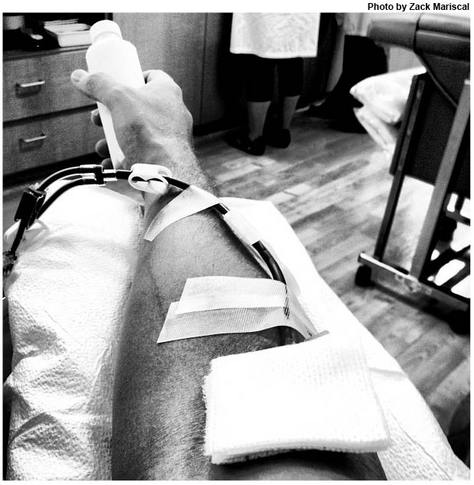
By Julie Ruel, Social Media Manager, Stanford Blood Center
At Stanford Blood Center, we collect a combination of blood products (red blood cells, platelets, plasma) using different procedures and equipment. For the scope of this article, we'll focus on two types of red blood cell donations: single unit and double unit.
August 23, 2012 at 8:49 am
Published by Stanford Blood Center
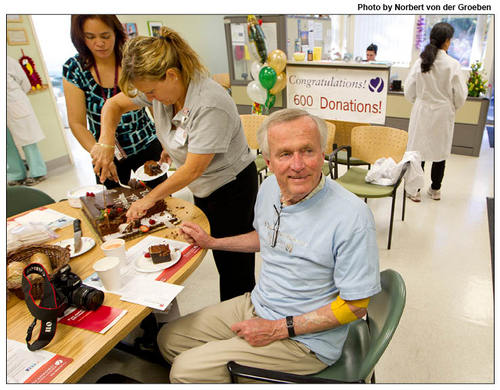
By Dayna Myers, Marketing Communications Manager, Stanford Blood Center
After more than two decades' worth of visits, blood donor David "Mitch" Mitchell hit a unique milestone on August 20 when he became the first person to make 600 donations at Stanford Blood Center.

August 15, 2012 at 12:39 pm
Published by Stanford Blood Center
When Randy Helmonds, wife Lisa, and their two teenage boys donate blood, they take an unconventional approach. Why sit quietly in the donor chair when it can be so much more exciting? "Creating a friendly, competitive environment is a fun direction to go," shares Randy who wants blood donation to be something his family looks forward to.
August 13, 2012 at 11:46 am
Published by Stanford Blood Center
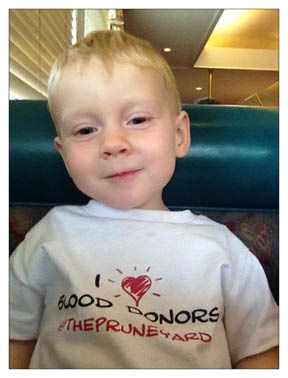
By Sinead Borgersen, Coordinator for Nimsoft Blood Drives
My two-year-old son Faelan has a hereditary red blood cell fragility disorder called hereditary spherocytosis. He inherited it from me and I inherited from my mother with another of my siblings. His red blood cells are fragile and spherical in shape instead of the normal donut shape due to a defective gene that causes the shell to be misshapen, like a pole missing in a tent. His red blood cells live a shorter life and the spleen becomes enlarged as it attacks the red blood cells, causing them to live a very shortened lifespan of 3-10 days. So he is anemic and fatigues easily.
August 2, 2012 at 4:49 pm
Published by Stanford Blood Center
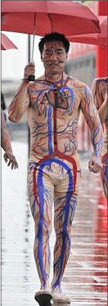
By Julie Ruel, Social Media Manager, Stanford Blood Center
Voluntary blood donors are needed in countries throughout the world to help maintain a safe and sufficient blood supply. Finding these donors is often a challenge for blood centers. So, many advocates have created unusual awareness campaigns to promote the need. Here are some of the most inventive efforts we've seen.
July 24, 2012 at 12:08 pm
Published by Stanford Blood Center
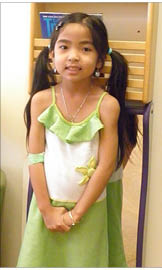
By Dr. Jennifer Andrews, Clinical Assistant Professor of Pathology (Transfusion Medicine) and Pediatrics (Hematology/Oncology)
When I first met Katelyn Do, she had already been diagnosed by my Pediatric Hematology colleagues with severe aplastic anemia. That means essentially that her bone marrow was no longer producing any blood cells, including white blood cells (in charge of fighting infections), red blood cells (in charge of carrying oxygen to all the organs in the body) and platelets (in charge of stopping any bleeding).
July 20, 2012 at 11:12 am
Published by Stanford Blood Center
By Billie Rubin, Hemoglobin's Catabolic Cousin, reporting from the labs of Stanford Blood Center
A heroic red blood cell - courageous, selfless, hard-working, picking up billions of oxygen molecules in the alveoli and coursing through the heart and every corner of the body electric feeding hungry tissues
July 13, 2012 at 10:50 am
Published by Stanford Blood Center
By Billie Rubin, Hemoglobin's Catabolic Cousin, reporting from the labs of Stanford Blood Center
Red blood cell (RBC) antigens have to be good for something - nature doesn't make useless things for no reason. We have similar ABO antigens to some on bacteria, pollen, grains, etc., and these may be involved in stimulating the production of our natural anti-A and anti-B antigens.

July 10, 2012 at 8:42 am
Published by Stanford Blood Center
On June 6, 2011, Melissa and her husband, Tim, and 3-year-old son, Flynn, welcomed twin boys, Keane and Hayes, into their family. Melissa's pregnancy and delivery had been normal. The twins were healthy and together weighed over 14 pounds which is considered big for twins. After a typical recovery period, Melissa went home to care for her family. "To me, my family was perfect and complete," she said.
July 3, 2012 at 11:06 am
Published by Stanford Blood Center

A Poem by Gil Gonzales, Stanford Blood Center Donor
The greatest of gifts that costs nothing to give
A gift of hope that offers a family a sense of relief
Just a little of your time, so that another may live
A minor inconvenience that spares others major grief
Offering the gift of life from one's own veins







